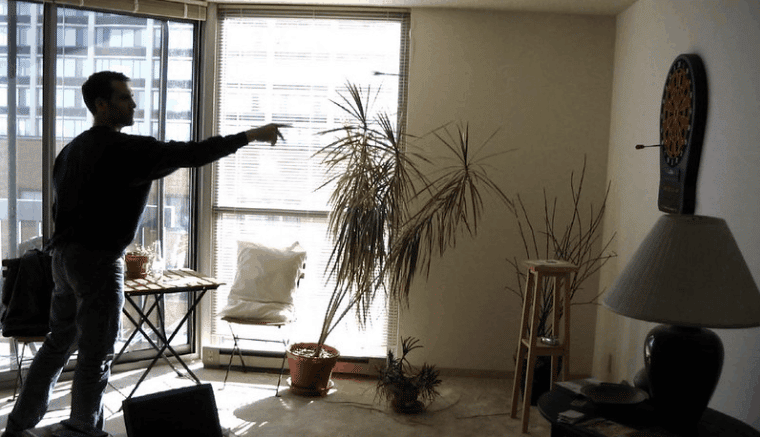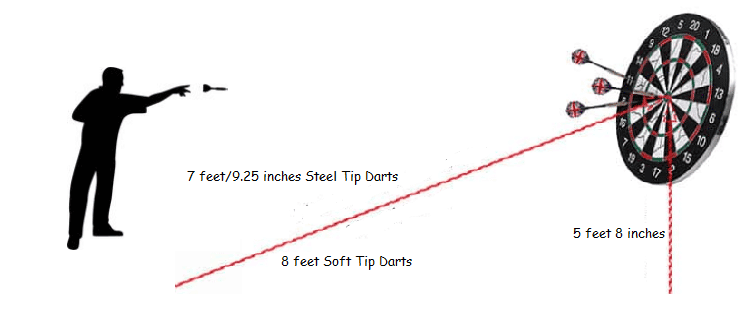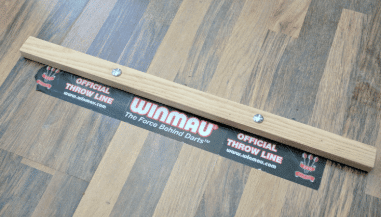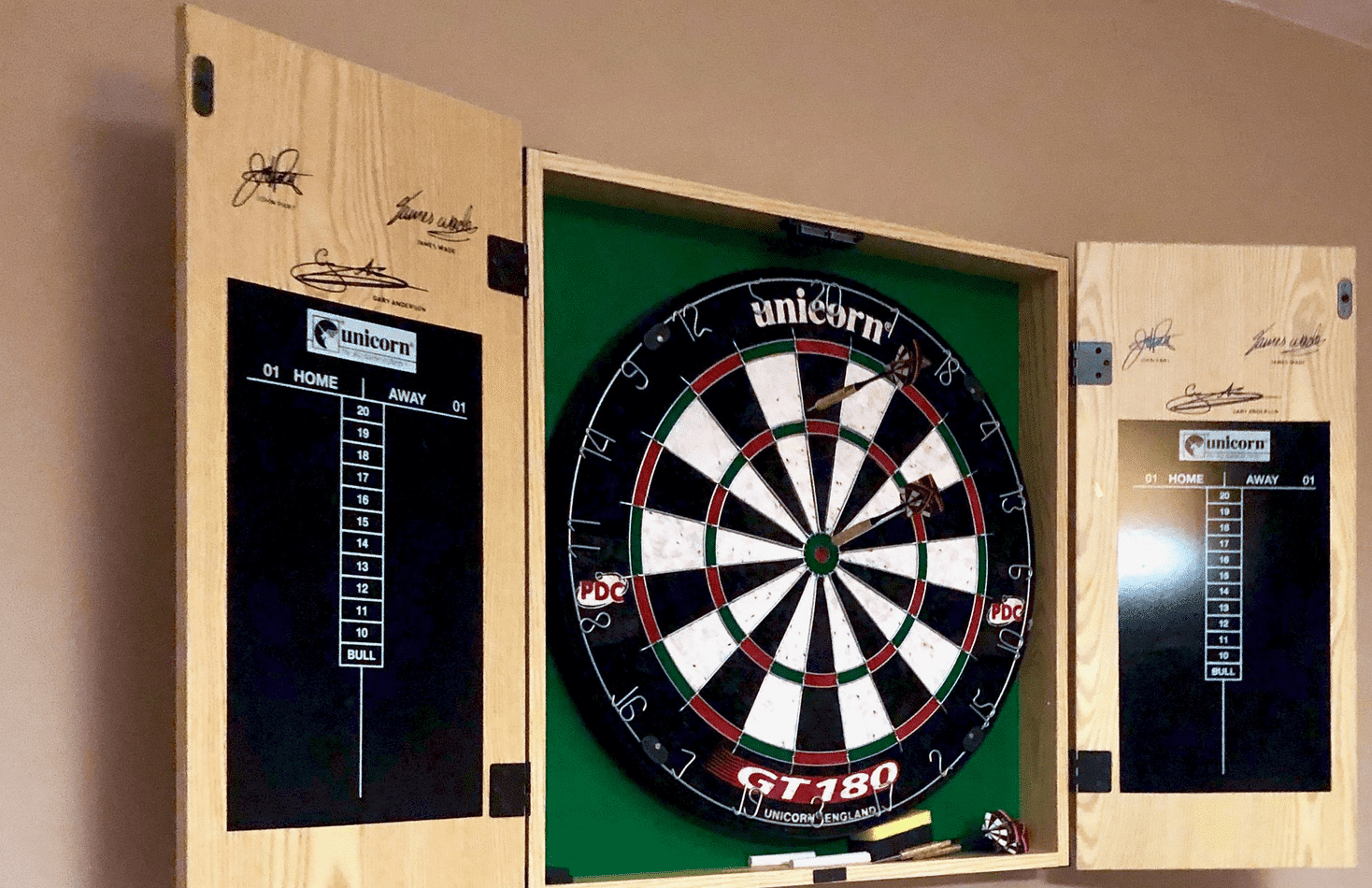Hanging your dartboard is the first step to playing one of the most popular sports in the world. There are a variety of different materials in which to hang your dartboard, but drywall is probably going to be the most common. The underlying problem with drywall is that there is a limit on the weight it can support.
Drywall is not as strong as plaster or wood and will require additional hardware if you want to safely hang your dartboard. Before you mount your dartboard, there are actually rules and regulations about the height and measurements of the dartboard and player.
These regulations need to be taken into account before hanging in order to properly play once everything is mounted and ready to go. In this guide we will show you step by step the best method to hang a dartboard on drywall.
Plan the Location Where You Want to Play

Look around your home for a nice open space that isn’t crowded with picture frames, furniture, or other obstacles. A good rule of thumb is to find an area that is at least 7 feet wide and 12 feet long. This should give you enough room to play without being distracted by objects or furniture.
Try to keep the surrounding area clear so that you can have a clear flight path for your darts as well as enough space for potential dart bounce outs. Don’t forget to keep in mind the space that is also required for other players as well as spectators.
Finding the perfect spot to mount your dartboard can be a tedious endeavor, but is one of the most important aspects for a successful play area. Don’t short change yourself on your dartboard’s location otherwise you will need to repeat the process later if you find that you mounted your dartboard in a less than optimal area in your home.
Inspect and Prepare the Floor
The floor that you stand and play on is the next important aspect you need to take into consideration. Depending on your allotted budget, it may not be possible to go all out with a custom floor setup for your darts. One thing to remember is that different materials can potentially damage your darts when they bounce off the dartboard and onto the ground.
Here’s a list of different flooring and how playing darts may affect them.
- Concrete, tile, or stone floors may cause your dart points to break or dull over time.
- Wood floors can easily be punctured from falling darts. Areas closest to the dartboard will be more prone to this type of damage.
- Carpet is the least likely to damage your darts, but will be exposed to constant foot traffic between the dartboard and throw line (oche) which can cause it to fade over time.
- Vinyl and linoleum flooring are also very prone to damage like holes and dents similarly to wood flooring.
Another aspect of your floor to consider is uneven flooring. Choosing a spot with the most level flooring will allow for a smoother playing experience. To check how level your floor is you can download an application on your phone or use a traditional level.
Calculate Where to Place the Dartboard to Ensure Players and Spectators Are Safe
Placing your dartboard in an area that will give everyone enough room to play is also a deciding factor when hanging your dartboard. Keep your dartboard away from doorways, places of high traffic, and away from an area with breakable objects like vases, paintings, etc.
You wouldn’t want someone to walk into the flight path of darts, nor would you want an expensive piece of furniture breaking due to bad placement of your dartboard. If you have previously decided to place your dartboard in an area that exposes you to these risks, then you may want to rethink where you set up your dartboard.
Protect the Surrounding Wall

Whether you’re a seasoned pro or an aspiring amateur at the game of darts, accidents happen. Not every dart will make it on the dartboard so it’s always a good idea to think about the surroundings of your dartboard.
We Recommend using a protective board like this one from Amazon will help keep the wall surrounding your dartboard protected from stray darts.
Another idea to protect your walls is to use a dartboard cabinet. Dartboard cabinets house your dartboard and act like a surround to absorb any incoming darts, but those can be pricier than a standard dartboard surround.
Marking and Hanging Your Dartboard on the Drywall

Once you have the location picked out for your dartboard, you will then need to properly hang it. To do this, start by measuring the bullseye and mark the wall. The official rules state that the center of the bullseye must be exactly 5 feet 8 inches from the ground.
Some dartboards are hung from the top, while others are hung from the center. If you are using a cabinet, or your dartboard is hung from the top, you need to measure the highest mounting point from the center of the bullseye then add 5 feet 8 inches. Keep this in mind when taking measurements and marking your wall.


Once you have the proper markings, the next think you need to do is drill a small pilot hole to place a plastic anchor into. An anchor will add enough support for your dartboard so that the screw doesn’t strip out of the wall.
Adding a drywall anchor before hanging your dartboard will effectively allow the screw to hold up to 50 pounds instead of only about 20 if you were to not use one. This is especially so if you have a dartboard stand or surround which adds additional weight.
If you don’t have a drill then you can use a special self drilling drywall anchor like this one that you can find on Amazon. This kit comes with anchors and screws which negates the need for a drill altogether.
Once the anchor and screw is in place, hang your dartboard and double check your measurements to ensure everything is correct.
Create the Throw Line (Oche)

The final step before you can start playing is measuring and marking the throw line or oche. In the official darts rules and regulations, the oche must measure exactly 7 feet 9.25 inches from the face of a steel tipped dartboard or 8 feet from a soft tipped dartboard.
You can use anything you want to mark this line whether it be tape, a piece of wood, metal, or even an official darts oche sticker. If you want to get really fancy, you could even install a laser oche.
Make sure that the throw line is centered and perpendicular to the face of the dartboard. You can do this by measuring from each corner of the line to the bullseye.
Final Thoughts
To properly hang a dartboard on drywall you will need to make sure you find an open space that isn’t cluttered with breakable objects or an area of high traffic. Take measurements and mark your wall to get ready for mounting.
Ensure that you have proper mounting equipment which usually consists of a drywall anchor and screw. Once you have the dartboard hung, you will then need to mark the throw line.
Once everything is measured properly and your dartboard is mounted, grab a friend and a few set of darts because you are now ready to play one of the worlds most popular sports.

